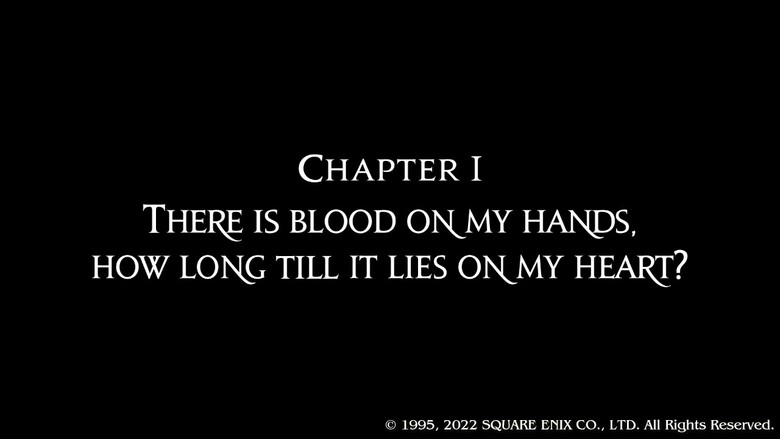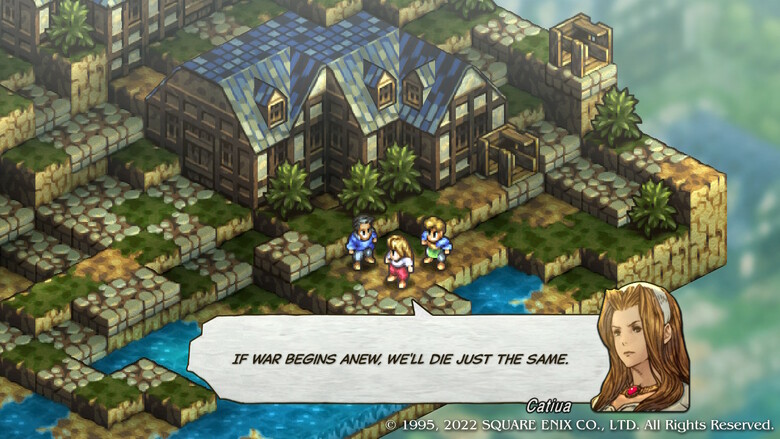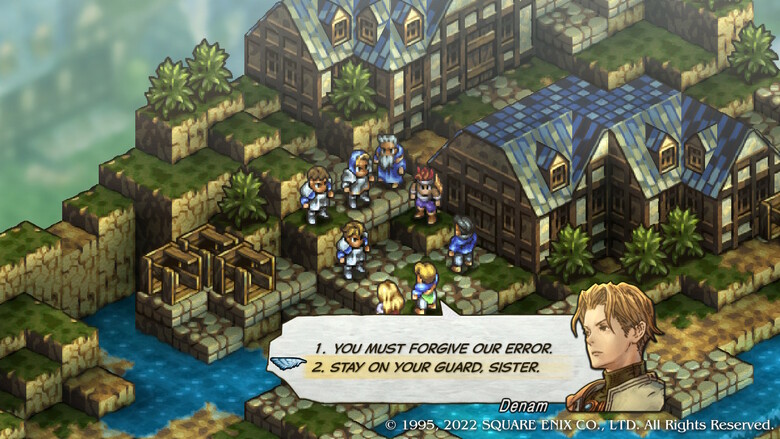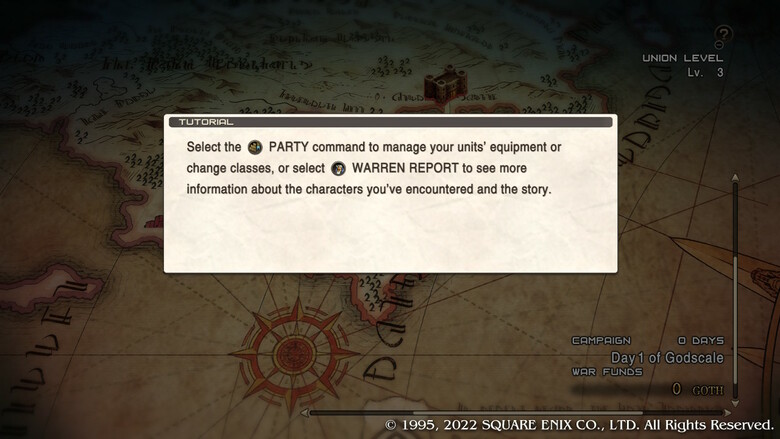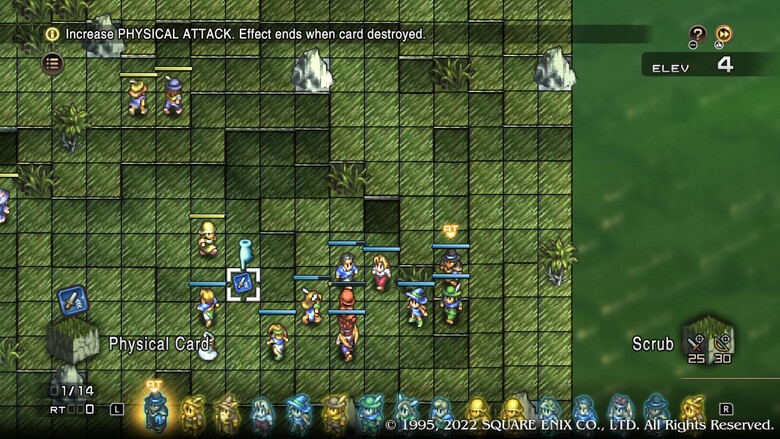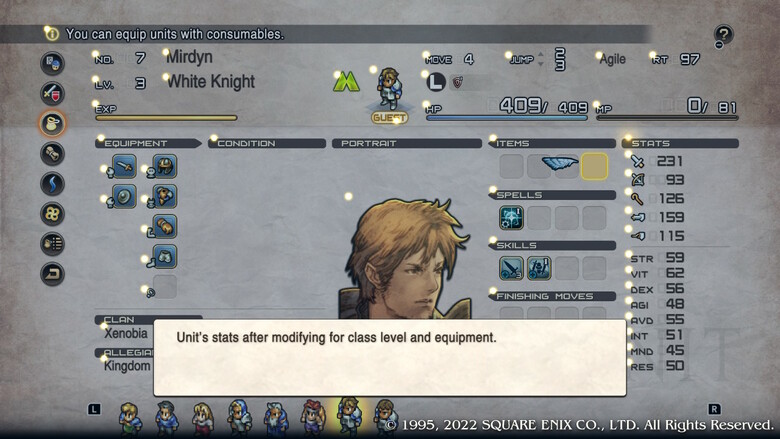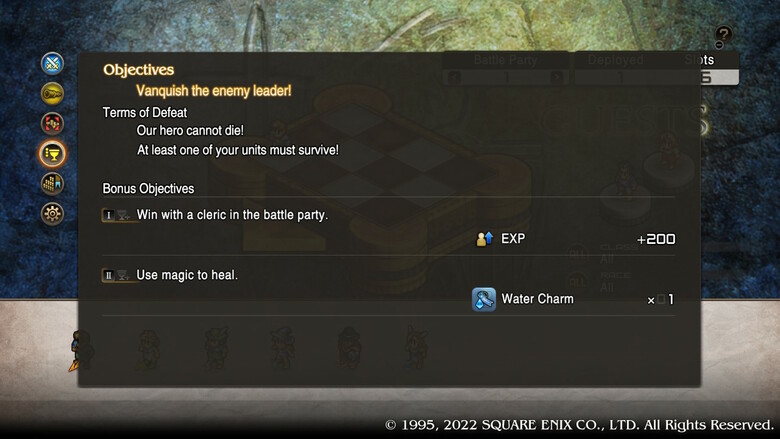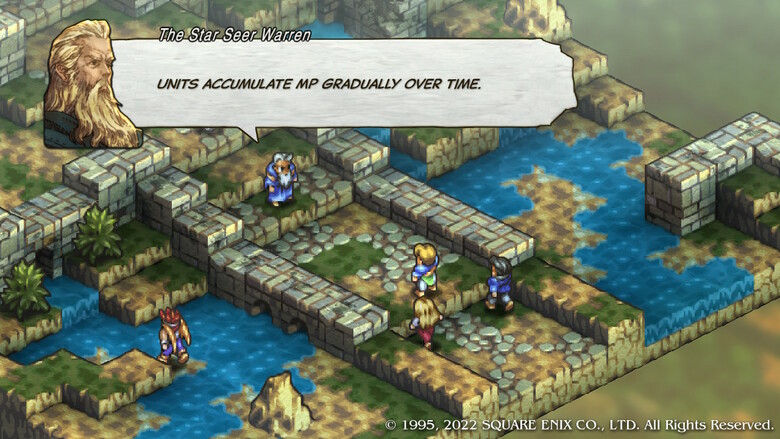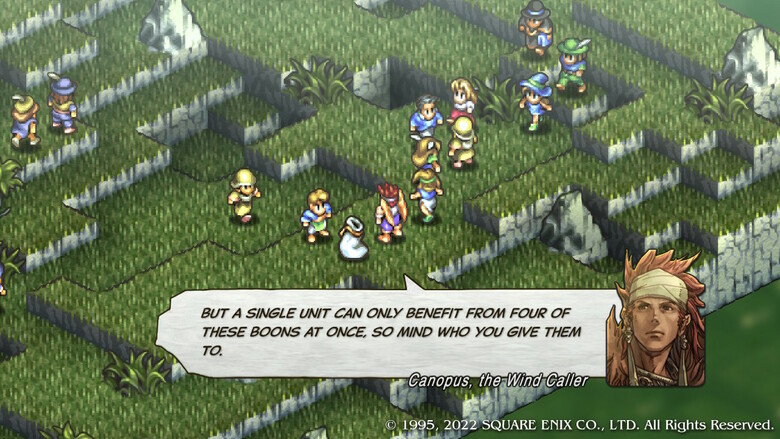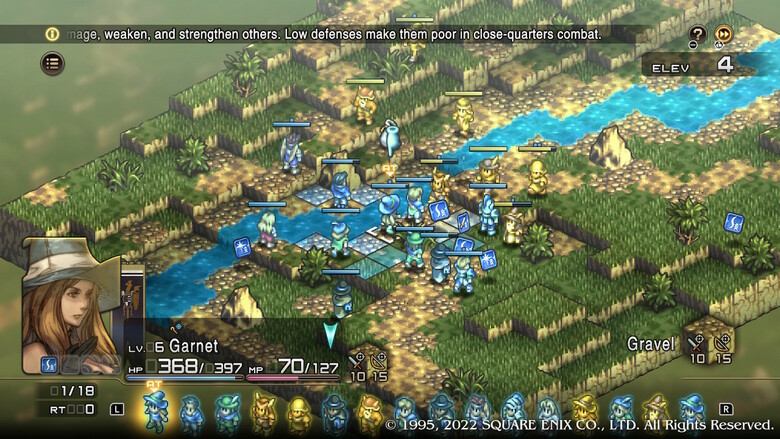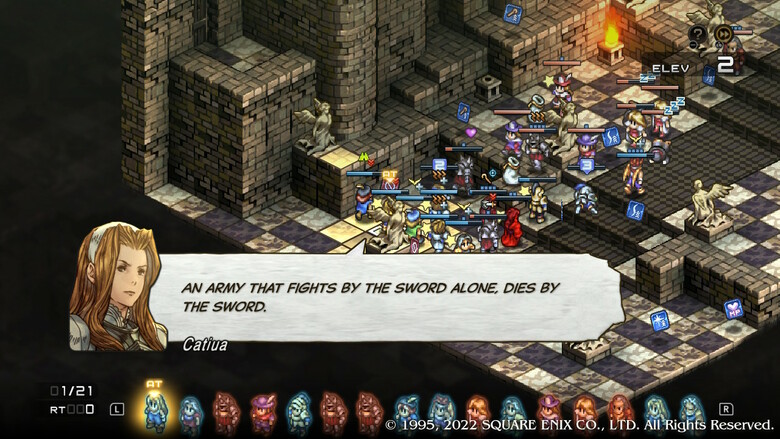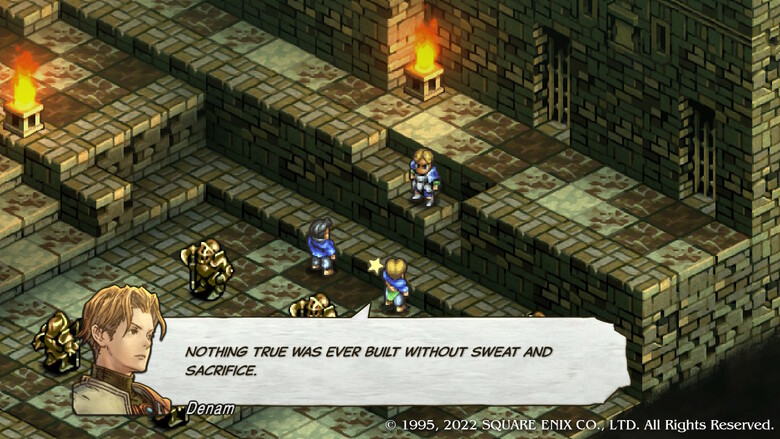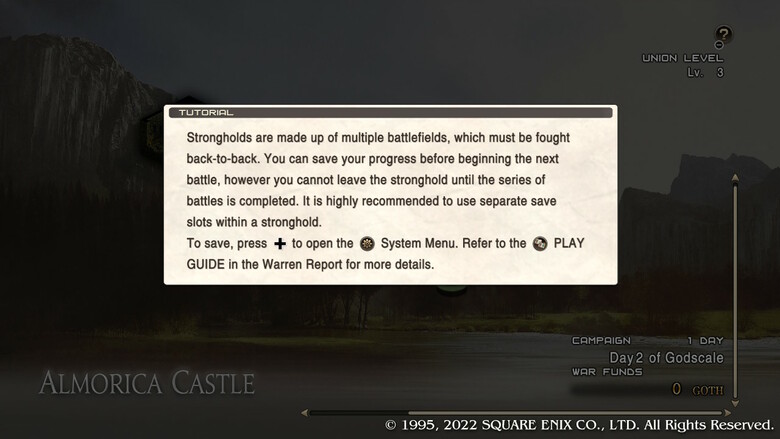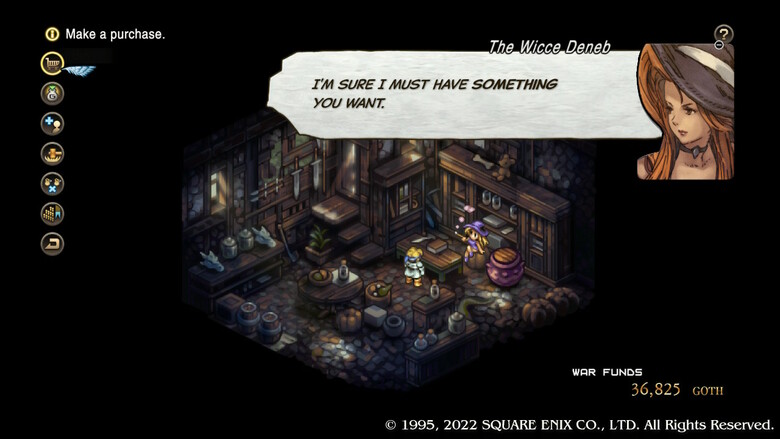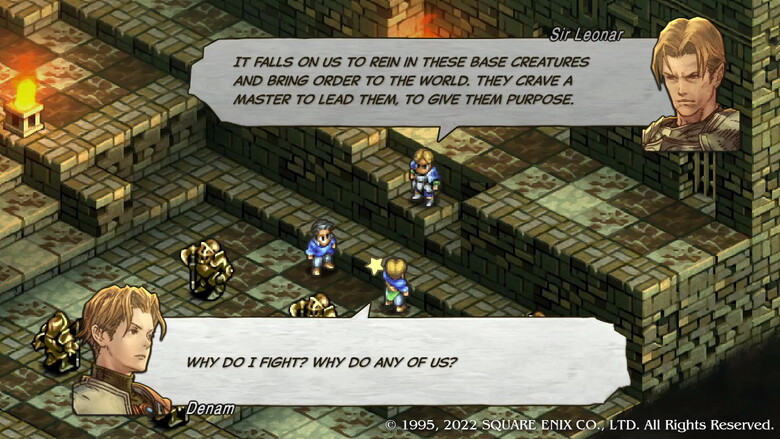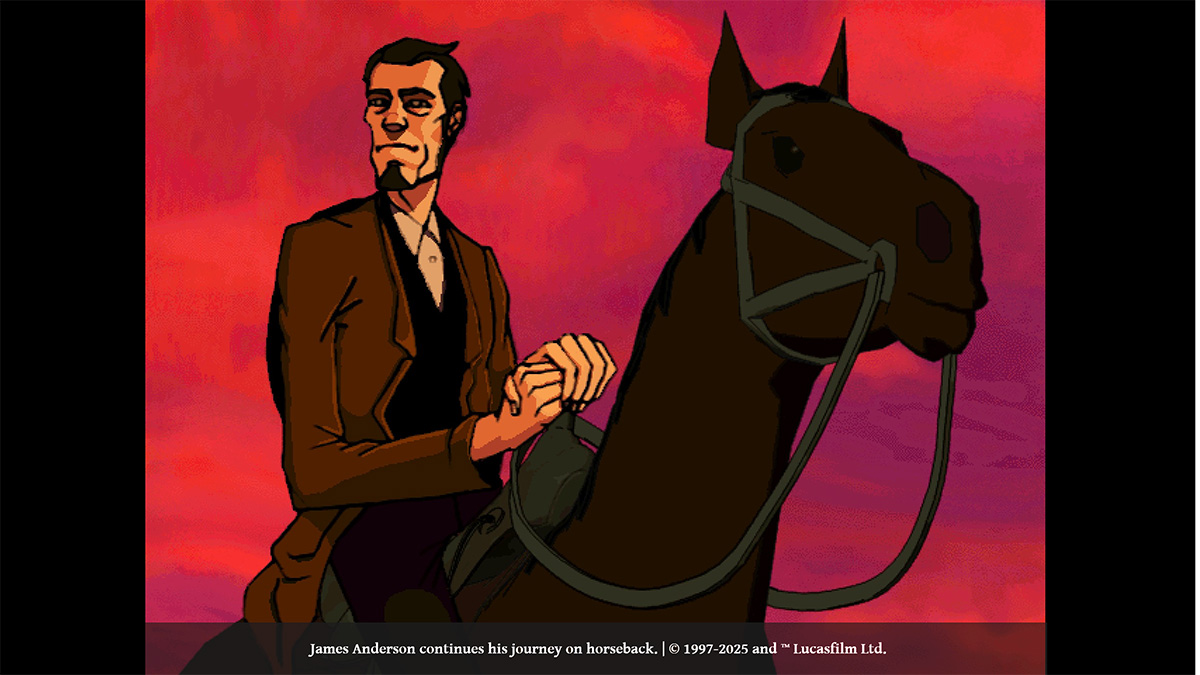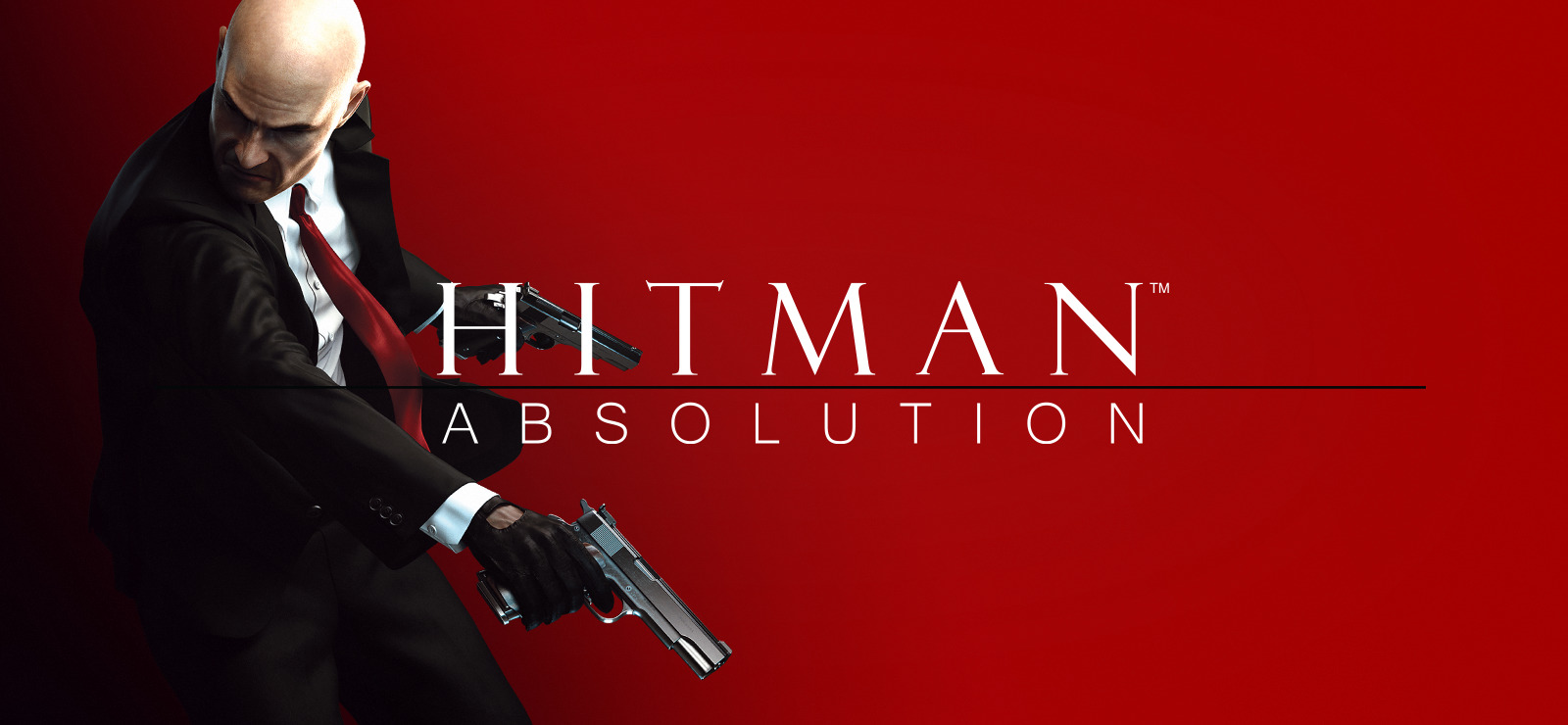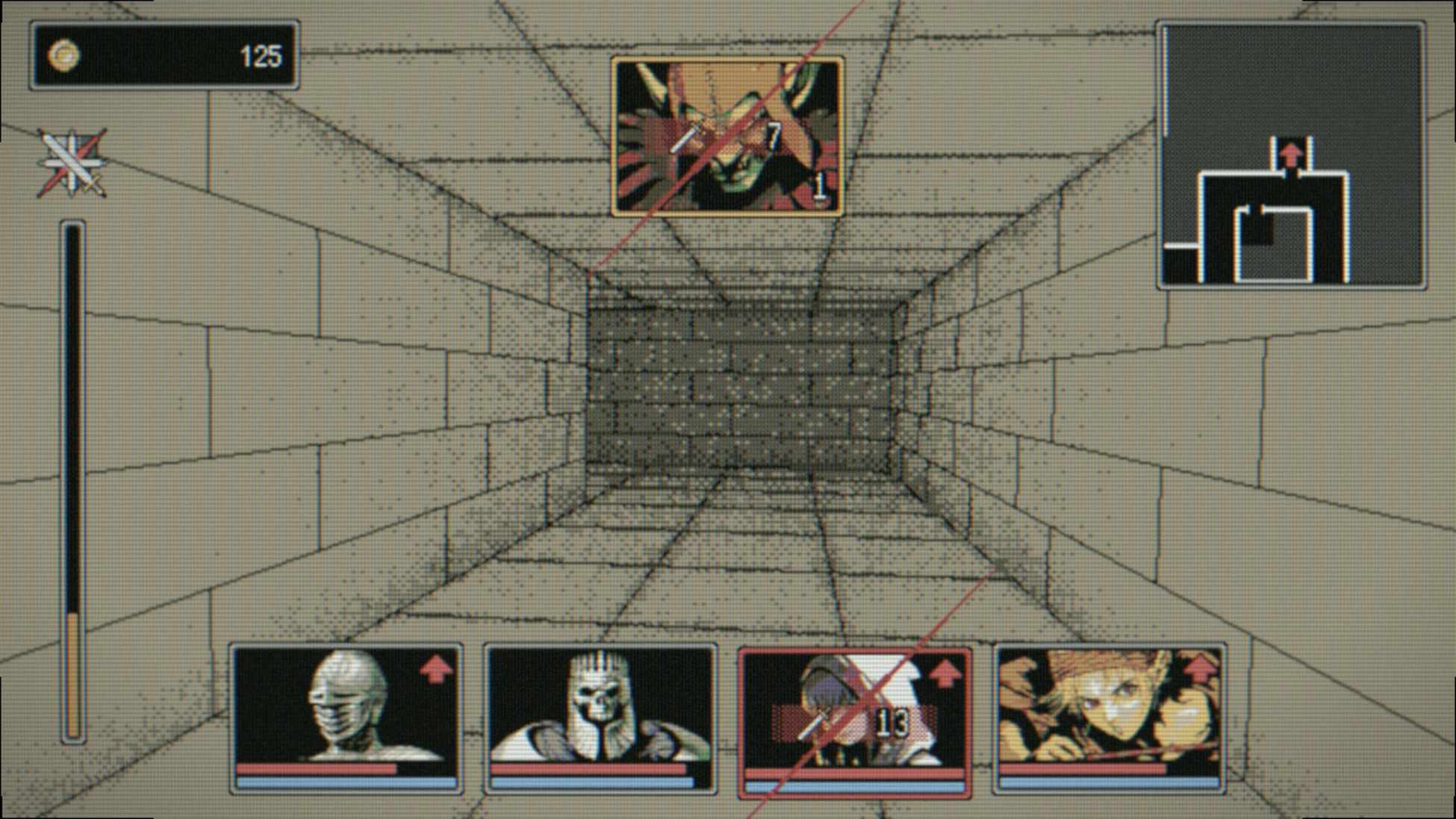Can you muster the courage to defend your convictions?
As the precursor to the universally beloved Final Fantasy Tactics, the original Tactics Ogre set the tone for what a deep and rewarding tactical RPG should be. Now, as the second remake of that original gem, Tactics Ogre: Reborn is a long, challenging and rewarding game that offers a very mature, dark storyline and fantastic character development.
The title of the first chapter is a clear indicator of how mature the storyline is.
The story begins with our hero Denam, along with his sister Catiua, and his friend Vyce, planning to avenge his father while fighting against the oppressive rule that governs their island. However, soon thereafter, they find themselves involved in a deep web of political intrigue and war atrocities. In fact, right after the first few battles, two facts that make the game appealing for some but off-putting for others are made clear: the game is quite hard and the storyline is very mature. Let’s focus on the latter first.
The sad reality of war.
The story deals with all sorts of delicate topics, but handles them quite well. You will find torture, genocide, suicide, children dying, and more war atrocities, along with political intrigue, betrayal, and questionable moral decisions. The game does an incredible job at writing and developing most characters, and you often question many of the choices you make throughout the game.
Choices are extremely important in the game.
At many stages, Denam will be given a choice, and the story unfolds depending on how you answer. There are three main paths you can follow, each of them offering characters you can recruit. Every decision matters, and you’ll no doubt feel nervous whenever you’re faced with a potentially game-changing question.
The game has a special menu, the Warren Report, where you can keep track of your decisions. This menu lets you go back and change your choices once you beat the game. Here, you can also access many other features such as biographies for all characters, news about the current events in the world (you can unlock side quests), or tutorials. In particular, the biographies get updated as the characters face different events, so you’ll want to keep checking constantly in case you get confused when new people enter the fray.
You can view the map from the top or isometrically.
The storyline would be wasted if the gameplay wasn’t rewarding, but Tactics Ogre delivers in spades. You select a given number of units per battle (at most 12) and then face the opposing army in a grid-based battlefield. You must complete the main objective of the map to win, usually beating the leader or vanquishing all enemy units. Both the preparation for and combat itself are extremely rewarding.
You can customize tons of aspects of your characters.
The game allows for an incredible amount of customization since not only can you recruit many generic units (including monsters), but you can also change their classes as long as you have a Classmark. These Classmarks can be obtained as spoils of battle. You can also buy and upgrade all sorts of equipment and magic, and since most classes can equip multiple types of weapons and spells, you can tailor your team to your liking. Each unit has an element, such as water or earth, and some are stronger against others. You can also change these if you get an Element Charm after a battle.
Most of the time, the optional objectives are quite accesible and offer good rewards.
Along the way, you can also pick up Experience Charms that are used to help characters that fall behind in levels. You obtain them by completing optional objectives, such as using a certain class, or when you get too much experience and your characters can’t level up further. Once a battle finishes, all the experience you get is spread among your characters. This clearly makes Charms the best way to help units catch up.
You also have to select which four skills you want to equip: Action, Support, Auto, and Special. Auto skills in particular are very important, since they may activate at the beginning of the unit’s turn and can bring great benefits to the team. Equally important are the Finishing Moves that you learn as you level up, as they can also turn the tide of battle, and many times they’re the only way to consistently damage a boss.
Sometimes waiting to charge up MP is a great strategy.
When planning, you also want to keep track of the Reaction Time (RT). Units with lower RT act first, and the weight of your equipment affects this. Also, depending on whether you attack, move, cast a spell or use an item, your RT will increase. This means you’ll need to think carefully when prepping for battle. On numerous occasions, you may want to do nothing on your turn, since you start with no Magical Points (MP). Magic Points grow with each turn, so if you wait, you’ll eventually have enough MP to use stronger skills or Finishing Moves.
If you pick up more than 4 Buff Cards, then the newest one will override the oldest one.
Battles themselves are extremely tactical. Height, positioning, turn order, weapons, elements, skills, and the enemies you face all play a key role in your strategy. Tactics Ogre introduces a feature that makes every battle unique every time: Buff Cards (BC). At random times and places, BC will appear on the battlefield. During the current battle, they can increase various stats: attack, magic, Auto skill activation chance, MP recovery, or critical chance. A new card may bring about fresh ideas, giving you a chance to conjure up a new approach, leading to a better plan to face your enemies.
It’s good to hurry up to pick all those Buff Cards up before the enemy does.
Another incentive to pick BC up as they appear is that enemies can pick them up as well, which can cause quite a headache! Instead, you may want to trick the enemy into picking up Reset Cards. These cards will destroy any BC that a character has picked up, so you want to avoid them. Finally, a third type of card will appear, Green Cards that permanently increase stats. They sometimes appear when defeating an enemy, and should also be made a priority in order to stop enemies from grabbing them.
So many things to keep track of make the game quite challenging, but when you succeed in your strategies is so satisfying.
If all of these aspects make the game sound overwhelming, that totally makes sense. With so many features to keep track of, battles can take long, which is where another taxing element of gameplay is worth discussing: permadeath. Any unit that dies is gone from your army. This is heartbreaking if you’ve invested a lot of time and resources in them. Thankfully, there are two features that can help you avoid such a fate.
First, except in rare occasions, when a character dies in battle, you have three of their turns to revive them. Usually, each of your team members will get two or three turns to bring them back to life. Second, the game has a feature, the Chariot Tarot, that will allow you to rewind some turns to fix a mistake. Of course, for those who want a bigger challenge, this feature can be completely ignored.
On the top right you can see your Union Level.
One final detail that ups the challenge while being rewarding at the same time is the Union Level. Your party has a Union Level and it only increases at fixed points in the story. No team members are able to go above the Union Level. This means that once you hit that number, you can’t grind for experience. Therefore, if you are facing a difficult battle and your level can’t go higher, you have to rely on your wits to overcome it.
Victory in this game requires a lot of effort indeed.
Many players will love the challenge even if repeated attempts are required. Those retries will pave the way for new strategies and refinements to your overall plan. The game encourages you to be creative with your party composition and tactics. It is incredibly satisfying to finally beat a level after creating your own path that was forged with ingenuity (and some luck, too!).
All that said, some skirmishes in particular rely too much on luck. To depend on whether an Auto Skill activates or a random BC appears makes some stages more annoying than fun. Luckily, there are very few of these moments in the game.
The game does warn you when you won’t be able to grind or access shops for a while. Nonetheless, you don’t know for how long until you finish the stronghold.
One more criticism stems from the game’s brutal final dungeon. You’ll receive a warning noting that you won’t be able to access training or shopping after you enter, but it doesn’t tell you that you may face close to 12 battles, plus two boss stages and the final boss. In fact, the final boss itself is extremely challenging and players may find themselves stuck for a long time until they think of a way to win. However, by the same token, figuring out a way to succeed makes the whole journey worth it, and it illustrates what makes strategy games so appealing.
There are many side quests available.
This is a game that’s best experienced in small chunks, since each battle will drain a lot of energy from you. This led me to find that playing in handheld mode is the best option. It took me close to seventy hours to beat the game without side-quests, and that time doesn’t count all the battles that were repeated after losing.
To conclude, a special mention to the epic and glorious music is well warranted. The soundtrack may bring tears during the sad moments, fill you with courage to face hard encounters, and enhance your joy after an incredible win.
The big question that governs this game.
Summary
Featuring a hardcore challenge with a mature story, Tactics Ogre: Reborn is the best place to experience where everything began, but with modern sensibilities. While crossing your fingers for a remake of Final Fantasy Tactics, you should absolutely play the game that not only inspired it, but set the tone for a whole genre.


